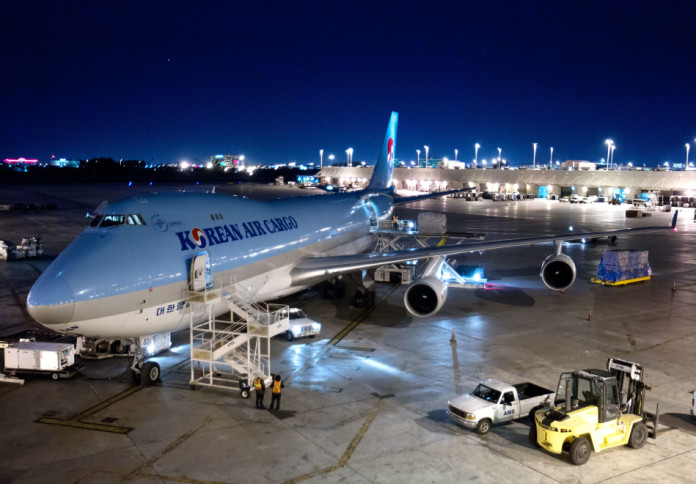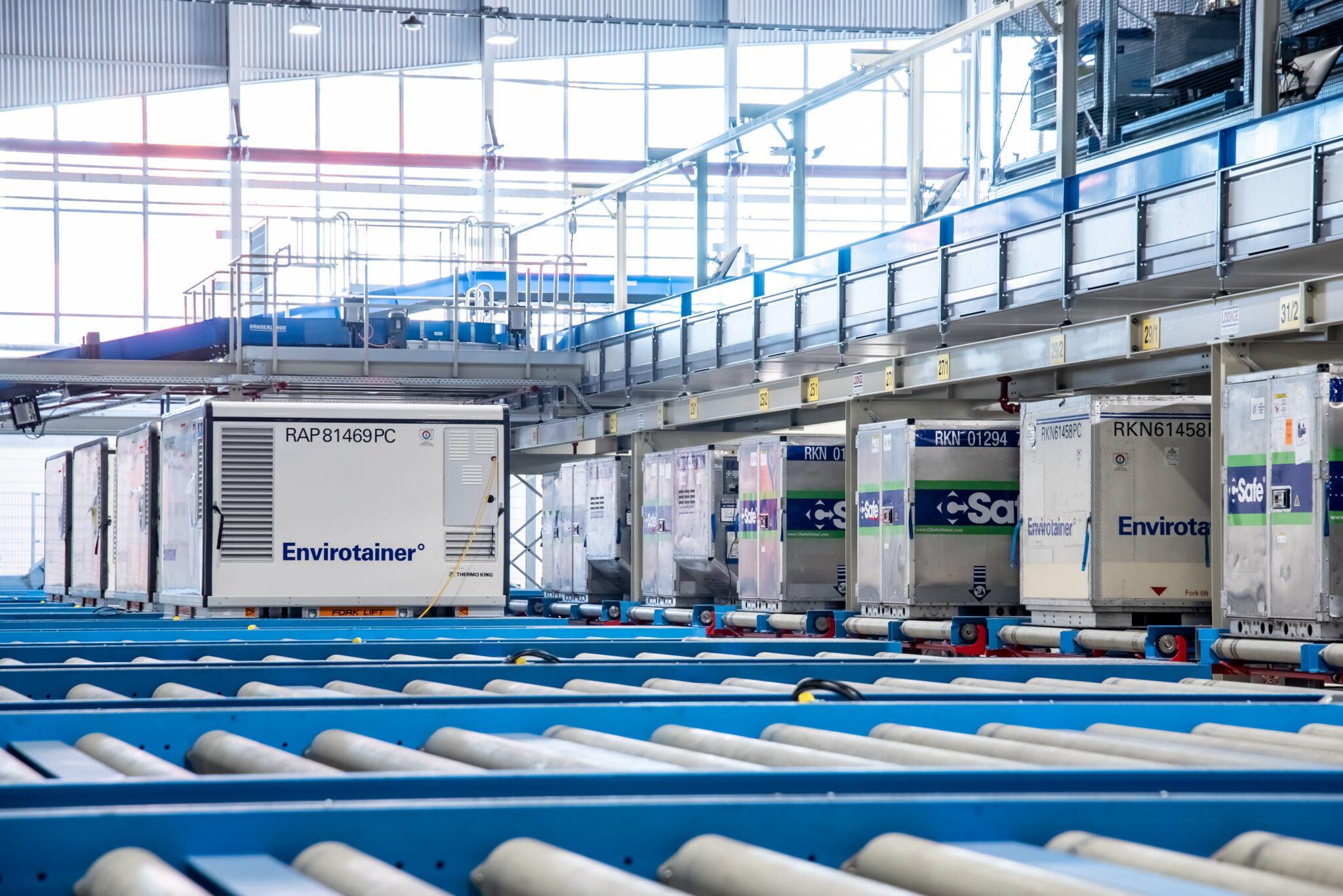

Korean Air’s cargo operations have a strong and beneficial influence on its bottom line as the company grows by developing new markets.
Figures show during the fourth quarter of 2016 that freight generated 2,868 billion Won ($83 million) for Korean against 2,284 billion Won in the same period of 2015. Korean Air declined to comment directly when asked by Air Cargo Week.
Cargo made up just under a quarter of the carrier’s total revenues at 24.6 per cent last year, again up on the previous year’s total which was still substantial at 23.1 per cent. The load factor was a buoyant 80.2 per cent last year compared with 77.8 per cent in 2015. This is an increase of 2.4 per cent the same margin by which yield increased to 290 Korean Won or $0.25.
The sources for this income are varied as the company admits. The biggest, when measured by route is the Americas at 43 per cent clearly ahead of second-placed Europe who still take over a quarter with 28 per cent. Two of the world’s hotspots China and South East Asia come on at 10 per cent and 13 per cent, respectively.
By sales it is a very different picture with China the biggest market at 27 per cent narrowly pipping the home base Korean market into second at 26 per cent. South East Asia is third on 14 per cent beating the Americans and Europeans who generate 13 per cent and 12 per cent of sales, respectively.
What is also happening is while there is growth in the total market, it is not across the board.
Japan as a source of revenue grew by 23 per cent although its only four per cent by routes by eight per cent by sales.
South East Asia grew by 17 per cent, Europe by seven per cent, the Americas by six per cent and China by five per cent. There was some contraction by four per cent and six per cent in the much smaller domestic and Oceania markets.
Korean is also optimistic about the coming year and expects the recovery of global economy pointing out growth of 3.4 per cent according to the International Monetary Fund and increasing world trade volumes, up 2.6 per cent by International Air Transport Association (IATA) estimates.
This, it acknowledges is despite uncertainty such as protectionist policies in US.
What it is also doing is keeping on with a strategy of developing markets overseas. Korean has previously said it would accelerate development of Vietnam market by operating direct flights in the Hanoi-Europe route.
In addition, the carrier says it is continuously moving forward with major cargo business strategies such as the expansion of traffic between markets in Navoi, India, and Europe.
“Furthermore, Korean Air is expanding cargo traffic in various ways such as reaching out to markets including Washington, Las Vegas, Colombo and other regions without cargo airliners,” Korean adds.
Within this are “plans to improve profitability by transporting high yield cargo items and providing flexible capacity,” it explains in an investor relations presentation.
“We are constantly developing new demand including medical supplies, fresh goods, e-commerce and so forth while, at the same time, focusing the company’s abilities on developing total distribution service,” the presentation adds.
This cargo product focus is similar to what Incheon International Airport expects to see moving through Korea in terms of volumes.
The gateway is not expecting to see major shifts within the products carried but is, like so many other places, expecting to move more perishables and garments. “Due to the growth of e-commerce and fresh goods cargo, we are expecting a rise in volume of clothing and fruits,” explains Incheon International Airport Corporation vice president of the hub strategy division, Byung-Kee Lim.
E-commerce figures larger in Incheon’s plans than that. Korea is one of the first wave of e-countries as its young and techy population drive the economy and changes of type that do catch the eye and the imagination and cash in the wallets of South Korea’s growing middle-class population.
“As for e-commerce, we are cooperating with the Korean Customs Office to simplify the B2B2C customs process. Also we are reviewing an O2O (online to offline) business model through which passengers are able to visit an offline mall near Incheon Airport to look at goods and afterwards buy them online when they get back to their home country and its vise versa,” says Lim.
The other growth sector Incheon itself is moving to capture more of is pharmaceuticals. “In collaboration with airlines and forwarders, we plan to obtain IATA CEIV certification to accommodate more pharmaceuticals,” Lim explains.












